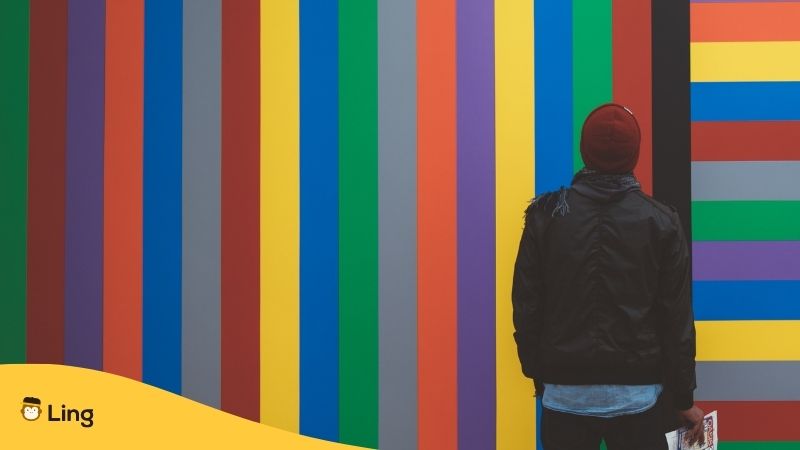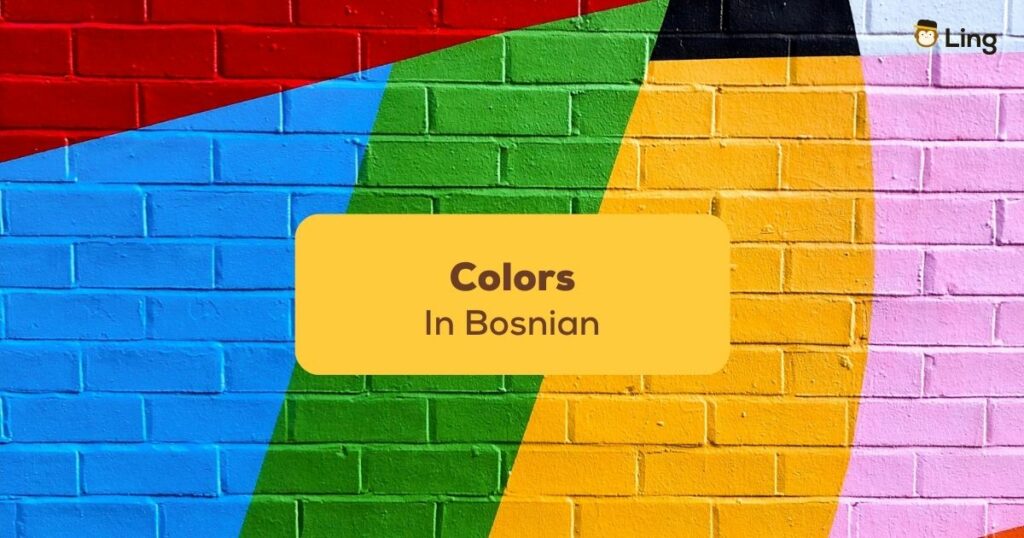Have you ever wondered how to say colors in Bosnian? As Johannes Itten said, “Color is life, for a world without color seems dead,” and so learning the vocabulary for each of the colors is a great way to enhance your vocab and cultural understanding. And in today’s post, that is exactly what we’ll do! Whether you’re learning Bosnian for travel, work, or simply for fun, mastering the vocabulary for colors can help you express yourself more accurately and confidently.
Colors or boje play a crucial role in our lives, from influencing our moods and emotions to shaping our perceptions of the world around us. They can convey meaning and evoke feelings without the need for words, making them a powerful tool in communication, art, and design. Different cultures and traditions also attach various meanings to colors, giving them a symbolic significance that can deepen our understanding of each other’s beliefs and customs. Let’s go over how the Bosnians see every color in the sections below!
Primary Colors In Bosnian
First things first, let’s start with the three most important basic colors: “crvena” (red), “plava” (blue), and “žuta” (yellow). These colors are like the foundation of a building, as you can mix and match them to create a diverse range of hues. Because we humans are trichromatic, the colors red, blue, and yellow are fundamental to us being able to appreciate the color palette of the world.
Secondary Colors In Bosnian
Then comes the secondary colors, we have “narančasta” (orange), “zelena” (green), and “ljubičasta” (purple). Where the primary colors are the foundations of the building, these colors can be thought of as like the walls of a building as they add a little bit of personality and character.
Orange, green, and purple are created by mixing equal quantities of the primary colors. So, red and yellow make orange, red and blue make purple, and blue and yellow make green. Another set of secondary colors, commonly called additives, can be created. Some examples are blue and green, which produce the color cyan (cijan), and blue and red to make magenta (magenta).

Other Colors In The Bosnian Language
Pink And Grey
Let’s delve into the fascinating world of Bosnian colors and discover some interesting hues. Take, for example, pink (roze), a color that can be associated with cuteness, playfulness, and modern art. In the context of a building, pink can serve as a decoration that adds a touch of sweetness to the room or creates a unique artistic vibe.
On the other hand, grey (siva) is a versatile and timeless color that can exude elegance, sophistication, and simplicity. Despite some considering it a dull or unexciting color, it is a popular choice for various architectural styles, interior design, and fashion, making it a valuable addition to any color palette.
Black And White
And what about black (crna) and white (bijela)? These colors are the floor and ceiling of our building – they are the background, but still very important. In Bosnian, the phrase: “Crno-bijelo” (black and white) may be used to describe something that is very clear and straightforward, without any grey areas.
But again, are black and white actually colors? Many argue that white is not a color but rather a combination of all colors because white light comprises all the hues on the visible light spectrum. And those same people argue that black is not a color but the “absence” of color. Black isn’t on the visible spectrum of color and is the absence of light. In fact, black is the only color that can exist in nature where there is no light at all.

Unique Colors In Bosnian
Bosnian has some unique color vocabulary that you might not find in other languages. For example, in Bosnian, there is “boja konoplje” (hemp color), which is a brownish-grey color. There is also “boja trule višnje” (rotten cherry color), which is a dark red color.
Colors in the Bosnian language may also have multiple meanings. For example, adjectives like “crvena” (red) can mean “angry” or “embarrassed” in certain contexts. “Plava” (blue) can mean “sad” or “drunk.” From the way I see it, everyone needs to pay attention to the context when using these words so as not to cause confusion or embarrassment.
Bosnians also have some interesting expressions related to colors. For example, “biti u zelenom polju” (to be in the green field) means to be in a good financial situation. There is also “živjeti u crvenom” (to live in the red), which means to be in debt.
So, whether you’re describing the walls of a building or the emotions of a person, Bosnian colors have got you covered. The next time you want to add flair to your language, why not try using Bosnian color vocabulary from the table below?
Start Learning New Languages With Ling!
Gone are the days of lugging around heavy vocabulary books or juggling conflicting schedules for language lessons! With Ling, you can finally learn 60+ languages (including Bosnian) and reach fluency through consistent usage. Its secret to success? The Ling app provides a comprehensive language learning experience that is both engaging and accessible.
Additionally, what sets this platform apart is that the lessons within the app are created by native speakers, ensuring that you receive an authentic and practical education. They also spent countless hours researching gamified learning to help you stay motivated and on track with your progress. Ready to start your language learning journey? Download the Ling app today from Google Play and App Store to get started!



































































